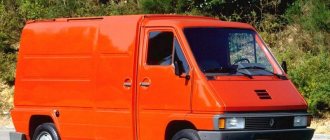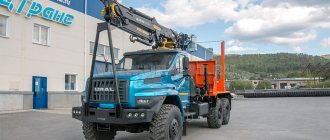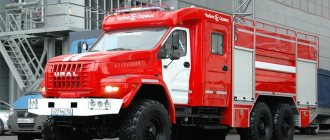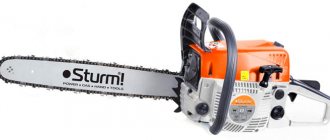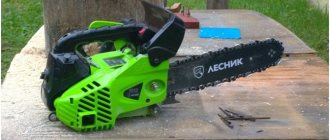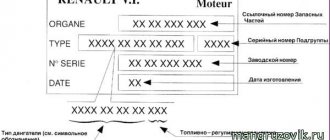Renault Master is a large family of French-made light-duty cars. The model is also known in Europe and the UK under the name Opel Movano and Vauxhall Movano, but it was developed and produced by French specialists.
Renault Master is a car capable of performing a variety of tasks. The car was produced in several body types (vans, passenger versions, chassis). The cargo variation has gained the most popularity. A distinctive feature of the Renault Master is the huge capacity of the cargo compartments.
Production of the model began in 1980, and after the introduction of restrictions on vehicle tonnage, demand for it increased noticeably. Renault Master completes the brand's commercial vehicle product line. Currently, the third generation of the model is being sold in Russia.
Model history and purpose
First generation
The first Renault Master model took several years to develop.
Her debut took place in 1980. Initially, the car acquired a 2.4 liter Fiat-Sofim diesel unit. Later a 2.1-liter diesel engine appeared. Since 1984, 2- and 2.2-liter gasoline engines have been added to the line of power units. A distinctive feature of the first Renault Master were unusual round-shaped door handles (similar to the Fiat Ritmo) and a side sliding door. Soon the French brand sold the rights to the family to Opel. Initially, car production was carried out at the Renault plant, and then was transferred to the SoVAB plant located in Batilly. Externally, the car did not look very presentable. The angular body, large rectangular headlights, and classic radiator grille did not add to the attractiveness of the model.
Initially, demand for the Renault Master was low, but panel vans quickly gained popularity. An additional advantage of the car was its large cargo compartment, which consumers liked. However, the debut generation of Renault Master was losing to its competitors (especially delivery companies from Fiat). However, it lasted 17 years.
Second generation
In 1997, the French presented the second generation of Renault Master.
A year later, the car was recognized as “Best Truck of the Year.” Since the second generation, the model has acquired features that have been preserved to this day. The car was distinguished by slightly chopped edges and a sliding design. At the same time, the French openly copied some elements from the Fiat Ritmo and Fiat Strada models (door structures, handles). However, Renault called all the competitor's claims unfounded. Renault Master II has become much more attractive and has a “European appearance”. In the front, a large bumper with niches for foglights, rounded hood lines, large headlights and a brand logo dividing the radiator grille in half were striking.
All modifications of Renault Master II were assembled in the north-east of France and were distinguished by the highest quality. The engine range has expanded significantly and included diesel engines of the G-Type series (developed by Renault), Sofim 8140 and YD (developed by Nissan). The transmissions used were 5- and 6-speed manual transmissions and a 6-speed automatic transmission.
In 2003, Renault Master II underwent a global restyling, during which the body contours became softer and the headlight area was increased. The model has become more similar to the Renault Trafic.
Third generation
The third generation of Renault Master was presented in the spring of 2010.
The car immediately began to be produced under several brands (Nissan NV400, Vauxhall Movano, Opel Movano). The appearance of the model has been revised. Huge teardrop-shaped headlights, a luxurious massive bumper and clear lines of the front end appeared here. Lighting technology and protection of body panels at the front and rear emphasized the reliability, solidity and modernity of the car. In terms of design, Renault Master III turned out to be very interesting. It was possible to give the car even more individuality by choosing the design of the sides (glazed or regular version). The dimensions of the model have increased slightly, allowing the usable volume to be expanded to 14.1 cubic meters. The thresholds have been specially optimized for unloading and loading.
The range of power units has undergone changes. This included engines with a power of 100-150 hp.
In 2016, the French introduced a special version of the Renault Master X-Track with increased ground clearance, underbody protection and a limited slip differential. Later, an all-wheel drive variation of the Renault Master 4×4 model appeared.
Today, the car is used in various fields, but the most popular are Renault Master vans, which are used to transport cargo of various volumes.
The lineup
Renault truck tractors differ in their wheel arrangement and ability to be coupled with long van semi-trailers.
Let's look at the models of trucks most commonly found in Russia.
Renault Magnum
Produced from 1990 to 2013. But despite the fact that the cars have not left the assembly line for 7 years, they continue to serve carriers.
The machines were produced with power from 400 to 520 hp. With. They are distinguished by good balance, a comfortable interior for the driver, ceiling height - 2.15 m.
Renault Magnum
Renault was the first to produce a car with a square cab, without a hood. And in 1991, Renault Magnum became the best truck of the year.
Despite the fact that the car is no longer produced, it is in demand on the secondary market. In the event of a breakdown, you can change the oil, crankshaft, and purchase oil seals at any truck service center.
Specifications.
| Parameter | Meaning |
| Engine capacity | 11–14 l |
| Curb weight | 16–18 t |
| Fuel volume | 1200–1500 l |
| Wheel formula | 4×6, 6×2, 8×4 |
| Fuel consumption per 100 km | 30–40 l (depending on load, road quality, driver skill) |
Renault Premium
This is the name of the series of truck tractors.
One of the first to appear was the Premium Long Distance model, which was equipped with engines from 330 to 440 hp. s., eight chassis configurations, a sixteen-speed gearbox and automatic transmission.
Later, a modification of the Premium Lander appeared, used mainly as a dump truck or concrete mixer on construction sites. Like the previous model, it has an automatic transmission and two engine options (DXi7 (7.2 l), DXi11 (10.8 l)).
One of the last in this series to roll off the production line was the Renault Premium 440 dxi 11C. Engine model DXI 11.
Renault Premium 440 dxi
Main characteristics.
| Parameter | Meaning |
| Engine capacity | 11 l |
| Curb weight | 11.4 t |
| Fuel volume | 1,400 l |
| Wheel formula | 4×6, 6×2, 8×4 |
| Fuel consumption per 100 km | 35 l |
T-440
This modification is designed for long-haul transportation. It has a mechanical robotic gearbox. Due to the modernization of the cabin shape (trapezoidal) and changes in the distribution of air flows, the aerodynamic drag coefficient has been reduced by 12%.
Renault T 440
Due to the installation of an aluminum tank and wheels, the weight of the car is reduced by 200 kg. The engine is automatically stopped when idling, which also helps reduce fuel consumption.
Characteristics of the T-440 line.
| Parameter | Meaning |
| Engine power | 380–520 |
| Curb weight | 18–26 t |
| Fuel volume | 1,560 l |
| Wheel formula | 6×2, 4×2 |
| Fuel consumption per 100 km | 30–40 l |
K-380
Renault Kerax dump trucks are designed for operation under high loads. They are equipped with double drive axles with two-stage gearboxes. A steel tank is mounted for off-road use.
The frame side members are equipped with brackets for fastening the body. If you compare this option with the previous one in the photo, you can see that the cabin is also made in the shape of a trapezoid to reduce drag.
Renault Trucks K 380
Main technical characteristics of the series.
| Parameter | Meaning |
| Engine power | 380–520 l. With. |
| Curb weight | 18–50 t |
| Fuel volume | 482 l |
| Wheel formula | 8×4, 6×4, 6×6, 8×8 |
| Fuel consumption per 100 km | 35 l |
D WIDE
Renault Track is constantly updating its lineup. Old options are being discontinued and replaced by new developments. One of these new products is the 2022 Renault Trucks D Wide.
This car uses DTI 5, DTI 8 and DTI 11 (Euro 6) engines. They have 7% less fuel consumption due to an advanced oil cooling system and new software.
D WIDE
The trucks are equipped with plastic fuel tanks.
Fuel savings are achieved by stopping the engine idling, aerodynamic cabin and turning off the power mode.
| Parameter | Meaning |
| Engine power | 270–340 l. With. |
| Curb weight | 18–26 t |
| Fuel volume | 845 l |
| Wheel formula | 2×4 |
| Fuel consumption per 100 km | 30 l |
Other models
Today Renault Trucks produces four series of vehicles:
- T – is represented by two types of cars: with a high and a regular cab. The larger version does not have a motor tunnel, so it has a perfectly flat floor. Equipped with 11 and 13 liter engines. Standard options include an on-board computer that monitors all systems, including the status of the coupling device. The car's footrest is equipped with handrails. Such vehicles are the best option for long-haul transportation.
- K and C – in standard versions it is equipped with an 11 or 13-liter engine. These are trucks that run on diesel fuel. Load capacity up to 32 tons. A comfortable interior is provided for the driver. The machines are designed for construction work.
- D – city truck for transporting goods. Available in three cabin modifications:
- width 2 m, total weight up to 7.5 tons;
- width 2.1 m, vehicle weight 16 tons;
- width 2.3 m, machine weight up to 26 tons.
Specifications
To expand the functionality of the body, Renault specialists offered several modifications of the model with 3 variations in height and length. There were also several ways to arrange internal partitions.
The short-wheelbase version has a length of 5048 mm and a width of 2070 mm. Its height was 2290-2307 mm. Ground clearance remained unchanged for all modifications - 185 mm. The front track was 1750 mm, the rear - 1612-1730 mm. In the medium version, the model had a length of 6198 mm, in the long wheelbase - 6848 mm. The wheelbase ranged from 3182 mm to 4332 mm. Turning diameter – 12500-15700 mm.
The maximum load, depending on the variation, ranged from 909 to 1609 kg. The permissible total weight was 2800-4500 kg. Trunk volume – 7800-15800 l.
Average fuel consumption:
- urban cycle - 9.5-10 l/100 km;
- combined cycle - 8-9.3 l/100 km;
- extra-urban cycle - 7.1-8.9 l/100 km.
Fuel tank capacity – 100 l.
General characteristics of Renault trucks
Since Renault Trucks belongs to the Volvo concern in 2022, vehicles of both brands are assembled with a number of standardized components, but Renault produces trucks in a lower price category. At the same time, the quality of parts and assembly of cars is maintained.
Purpose and benefits
Renault long-haul trucks are used for different purposes depending on their technical characteristics.
Thus, lightweight models with 4×2 and 4×4 wheel arrangements are used for transporting goods over long distances. The maximum load falls on the reinforced rear axle. Cars can transport up to fifty tons at a time.
Heavy vehicles 6×4, 6×2 are purchased by construction companies, since the equipment has proven itself in transporting large-tonnage cargo over short distances.
The advantages of Renault cars include:
- reliability that allows you to operate vehicles in difficult conditions even without proper maintenance;
- comfortable dashboard, convenient controls;
- flat floors in the driver's compartment, a closed step that allows you to open the door only from the bottom step.
There are videos on the Internet with reviews of Renault trucks of different models, which show all the advantages of the cars.
Design Features
Due to the fact that the Renault Track brand belongs to the Volvo automaker, the same internal combustion engines are installed on trucks as on Volvo trucks - modern dXi11/13 engines.
Using Optidriver+ in a gearbox allows you to change gears instantly, without reducing the load and speed of the car.
For Russia, where roads do not always comply with European standards, the ability to switch the gearbox from automatic to manual mode, which allows you to turn on lower speeds, is of great importance. ZF Ecosplit technology, in addition, provides fuel savings of up to three liters per 100 km.
Renault trucks are equipped with maintenance-free batteries, into which, thanks to new technology, you do not need to fill the electrolyte yourself. The service life of such a battery is 50% longer than that of conventional options.
Specifications
All models are produced according to the European technological standard EURO-5, and the latest ones – EURO-6.
The powerful engine allows the empty car to travel at speeds of up to 210 km/h, and with a load of up to 160 km/h. But you won’t be able to drive at that speed on the highway, because the car has a limiter of 98 km/h.
Other parameters that differ for different models of the line:
- engine capacity;
- motor power;
- total fuel volume;
- vehicle curb weight;
- load capacity;
- clearance.
Engine
All modifications of the latest Renault Master are equipped with a 2.3-liter diesel unit with a power of 100 to 150 hp. This engine is a continuation of the MR engine line from Nissan, but is used exclusively on the Renault Master and “twins” of the model. All versions of the unit comply with Euro-4 requirements. Versions are available with and without Common Rail. The engines have 4 cylinders (in-line).
Motor characteristics:
- 100-horsepower version – maximum torque 248 Nm;
- 125-horsepower variation – maximum torque 310 Nm;
- 150-horsepower version – maximum torque 350 Nm.
Device
The range of commercial vehicles particularly clearly reflects the corporate style of the French brand. Renault Master is a clear confirmation of this. The car body, which is both practical and high-quality, is distinguished by a large decorative grille that adds individuality to the model. Side protection and a large front bumper make movement safer. French assembly guarantees the highest quality of all components. The model is distinguished by low operating costs. External elements (doors, hood and others) have a long service life. It is no coincidence that the manufacturer provides a guarantee against through corrosion for 6 years. One of the components of durability is the decorative coating of the body.
The front suspension for the model was designed using an upper reaction rod from 2 levers. This design has a wide profile that allows you to control the movement of the car on wet roads. The front wheels are equipped with independent suspension. The latest generation Renault Master is equipped with a suspension and chassis that are known for excellent directional stability. The wide track provides additional control on any type of surface. Regardless of the load, stable operation of the suspension is maintained. The rear suspension is based on a trailing arm.
The Renault Master brake system is distinguished by its increased efficiency. Ventilated disc brakes are used at the front and disc brakes at the rear.
Front- and rear-wheel drive versions of the car are available on the Russian market. The transmission option is a 6-speed manual gearbox. The sixth speed improves the fuel consumption characteristics of the machine and increases the acoustic comfort inside. The gear shift lever stroke in the Renault Master III has become shorter and the shift force has become less. At the same time, all gears are switched extremely clearly. By revising the ratio of gear ratios in the gearbox, the acceleration dynamics of the car have increased.
Inside, the latest Renault Master is an incredibly well-thought-out product. The cabin has a lot of storage for items of various purposes and sizes. There are pockets for small items and capacious niches for documents. This allows the driver or forwarder to pack everything they need. Visibility to the sides and through the windshield is excellent. In addition, the driver can adjust the steering wheel height, choosing the optimal position. The hydraulic booster allows you to avoid making additional efforts while driving. The seats deserve special attention. The driver's seat effectively minimizes oscillations and vibrations regardless of the person's weight. Speed bumps are practically not felt on it. Height adjustment and lumbar support are also available (already in the basic version).
Renault Master III is smartly made and looks more like an expensive long-distance truck than a delivery van intended for the city and its environs.
General description of trucks
Renault trucks are assembled at factories located not only in Europe, but throughout the world. There are 16 concerns in total. About 90 thousand copies are produced per year, which is a fairly high figure. The company employs 15 thousand people. Officially, cars are sold in more than 100 countries around the world. There are about 1,200 centers operating on their territory.
During 2006-2007. Renault trucks have been modernized. Even heavyweights equipped with diesel engines received restyling and new modifications. Factories began to produce new DXi units instead of previous models of units called DCi11. They are distinguished by the fact that they have four valves, turbocharging, a direct injection system, and these engines fully meet Euro 4 and 5 environmental standards.
Renault trucks have a unique cab design and original design. This makes the cars appear graceful and also easily attracts the attention of any experienced driver. As an example, we can name the 1990 model, which was produced in different modifications. The cabin has a flat floor. The model itself has a Radiance truck tractor, a chassis with a hybrid power mechanism.
Recently, the demand for cars has increased significantly. The domestic markets of the Republic of China and the Russian Federation were especially interested in them. Therefore, the manufacturer produces models specially adapted to the climatic and road conditions of these countries. Thanks to cooperation with Nissan, which took place in 2006, trucks began to be assembled in Spain. Soon these cars were introduced to the European market.
Reviews
- Vasily, Saransk: acquired Renault Master in 2013. At work, I often had to transport bulky cargo within the city, which I loaded by hand, which is why purchasing a car of this type was necessary. I chose Master because it is assembled in France, which guarantees high quality. In addition, I liked the appearance of the car. From the family line, I took the longest and most voluminous version with rear-wheel drive and a 125-horsepower common rail engine. In this configuration, the Renault Master drives briskly on the highway and around the city (while the engine makes minimal noise). True, when fully loaded, the speed performance decreases noticeably. Average consumption is about 8 liters on the highway, 11-13 liters in the city. The 6-speed gearbox makes driving very enjoyable and shifts gears very easily. The car itself is very reliable, and the only drawback I consider is the unprepared place for transportation. However, Renault Master is an order of magnitude better than the domestic GAZelle.
- Vladimir, Saratov: I bought a used version. An acquaintance was selling Renult Master quite cheaply. A better car at that time could not be found. I have been using the car for 3 years now. The vehicle is quite easy to drive and the brakes work effectively. The Renault Master accelerated to 100 km/h, but it can go faster. With moderate driving, combined cycle consumption is 9 liters. The car came to the rescue many times when it was necessary to transport bulky things. Moreover, it works no worse in winter than in summer. Now about the cons. The sound insulation here is not the best, and car repairs are very expensive. If the breakdown is serious, then it is better to immediately prepare more money.

